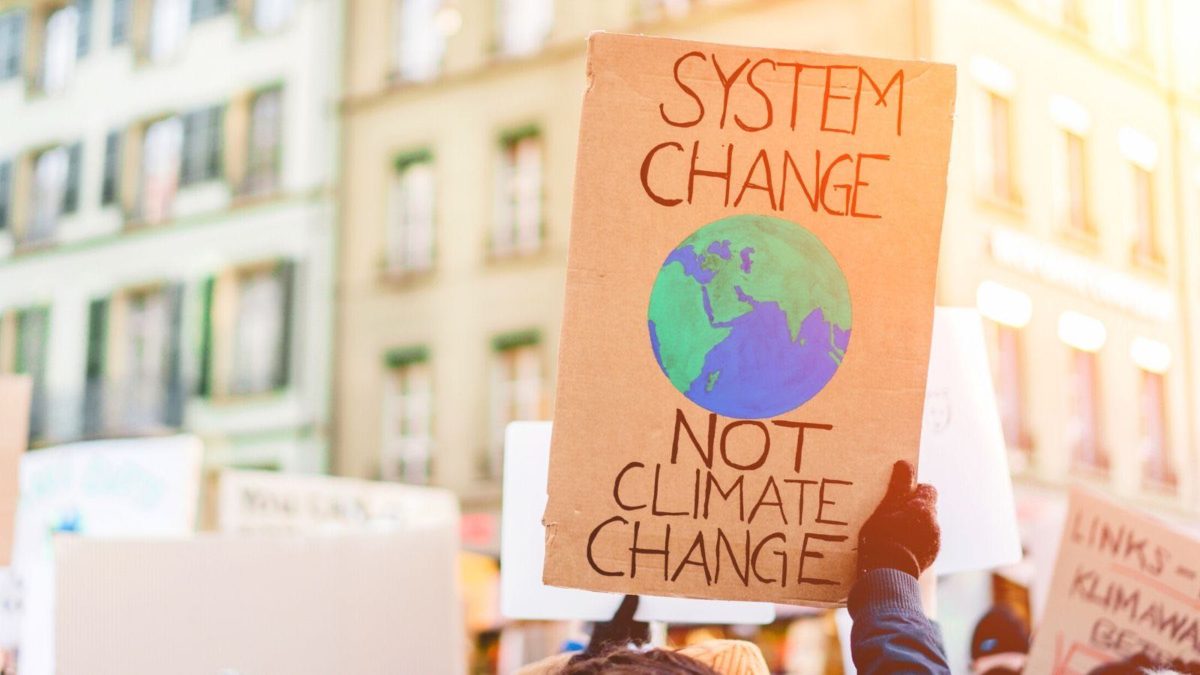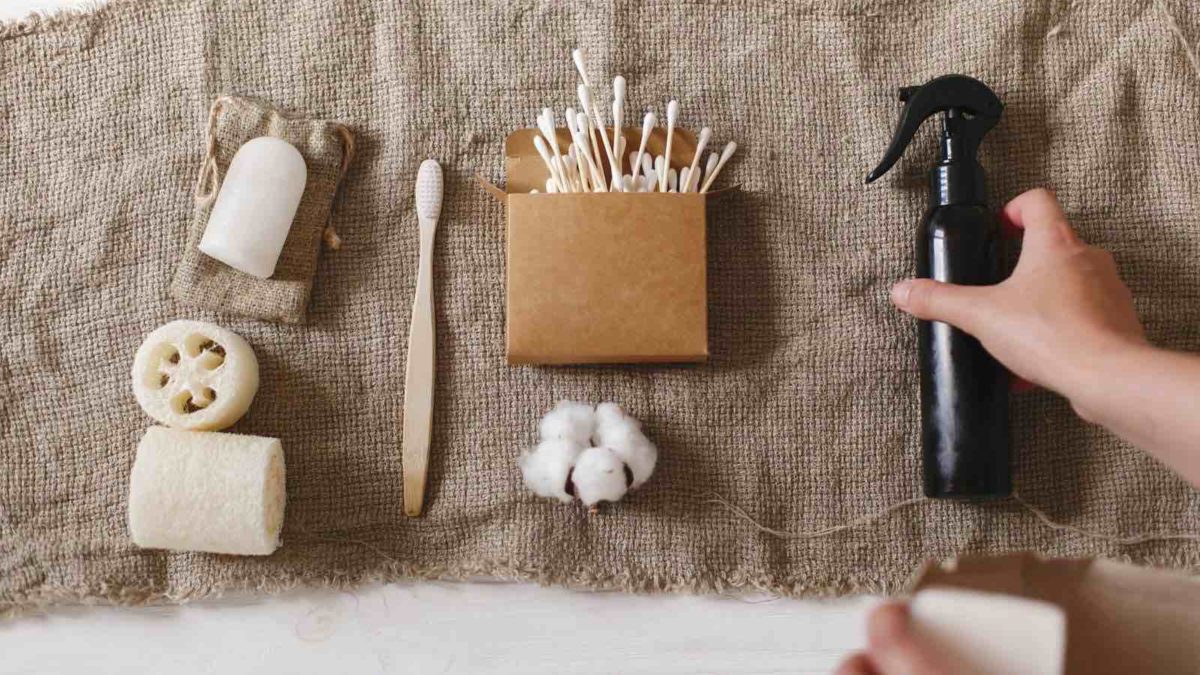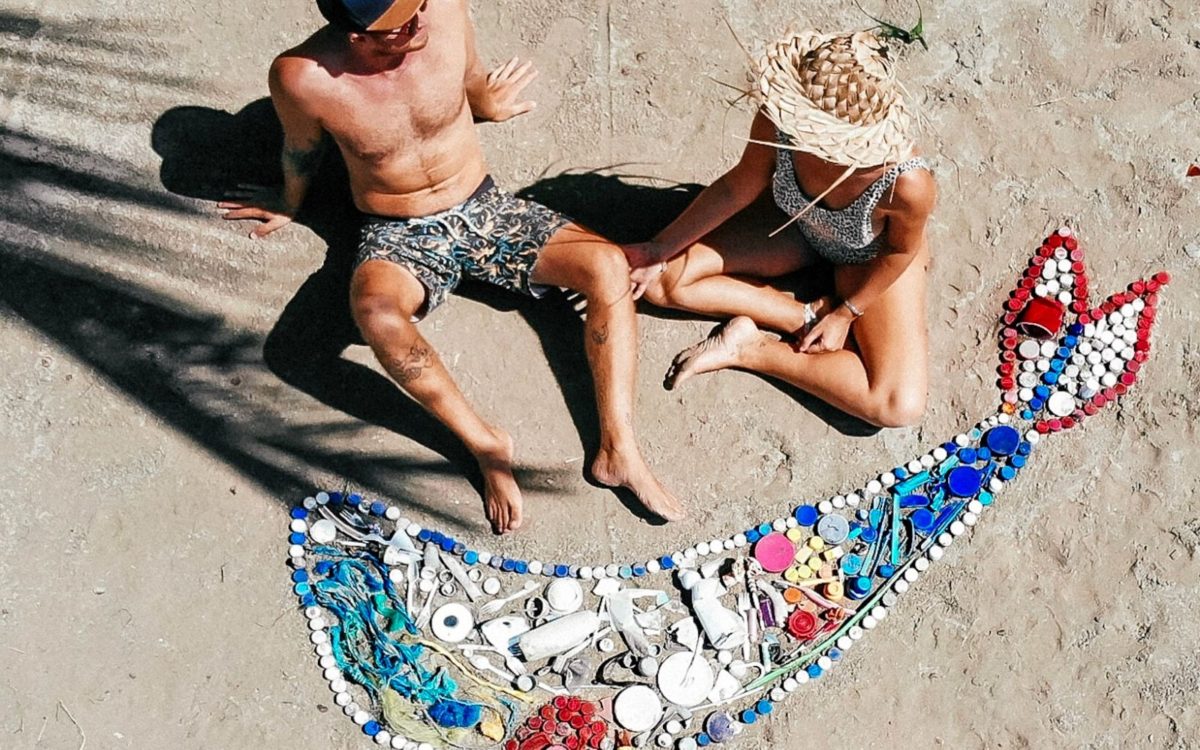Sustainable fashion is a fast-growing industry. People are craving change and want to see a global shift in the fashion industry. But what is sustainable fashion? And how do you quantify “sustainable”?
This post may contain affiliate links, which means I may earn a commission if you click a link and make a purchase. As an Amazon Associate, I earn from qualifying purchases.
This guide to sustainable fashion addresses the topics of materials, production and the environmental impact of the industry.
We look at sustainable brands that care about their environmental impact and ethical practices. The shift towards sustainability is one we (as consumers) should be encouraging. Sustainable fashion has the potential to reduce global pollution issues.
Table of Contents
What Does Sustainable Fashion Mean?
A sustainable fashion brand will consider a few key elements that “mainstream” brands are not. These will include the following:
- Environmentally friendly production
- Recycled Materials as the base for new items
- Up-cycling vintage clothing /second hand items
- Organic fibres (such as organic cotton, linen, hemp, etc.)
Sustainable fashion is focused more on low volumes, high quality. This is the opposite of the mainstream fast fashion industry.
What Is “Fast Fashion”?
Fast fashion has flooded store shelves around the world for years. From Beijing to New York City, there is a seemingly endless supply chain of clothes awaiting consumers. And they are cheap!
There are a few definitions of the phrase “fast fashion”, however, they all follow the same guidelines:
- Fashion brands making clothes and products from heavily processed materials
- High volume clothing production – quick turnover of products on shelves
- Generally, clothes made cheaply and not environmentally friendly (due to the mass volumes and low costs of production)
The negative effects (both environmental and ethical [human treatment]) have been well documented over the years. Large sweatshops in developing countries pumping out affordable, big-name clothing brands. This has been in news headlines for decades. Yet, most big companies are simply not making significant changes.
Is sustainable fashion ethical (ethical fashion)?
In short, no. Or, not necessarily.
The focus on sustainable fashion is on reducing environmental impacts. A Zero Waste Store is not always ethical, but they are typically striving to cover both sustainability and ethical products.
The fast fashion industry has (in many cases) had detrimental impact on the environment. Especially due to chemical treatments and processing (using dyes and fabric altering chemicals).
In some cases (as noted in the River Blue Movie), people in India can tell what color is in fashion based on what color the river is. As clothing manufacturers dump huge volumes of processed overflow directly into rivers. This has huge negative impacts.
Ethical fashion is focused more on the conditions of the workers themselves, and whether materials are dealt with in fair trade deals.
Why is Sustainable Fashion Important?
Sustainable fashion is a complicated business. Positive changes come with many debatable thoughts. It appears that achieving true sustainability is a difficult concept as each new initiative has some kind of fall back. However, a new wave of progress is changing the industry.
What we do know, is that the fashion industry induces a lot of harm to the environment. It has a long and complicated (and somewhat secretive) history, with so many integrated parts.
These break down into the following main categories:
- fibers creation (farming, harvesting, extraction)
- textile manufacturing (conversion of fiber into fabric & the dying process)
- production of clothes (knitting, weaving, etc)
- shipping (global and local)
- retail
- washing and drying during use
- disposal of the item
The fashion industry’s supply chain contributes to greenhouse gas emissions, microplastics, and poisonous chemicals that all end up damaging our ecosystems. Furthermore, the high turnover of “fashionable” clothing and accessories is driving our highly consumer-based mentality. As a result, clothing quality is reducing, and the turnover of materials is increasing exponentially.

Fast Fashion Facts
A report by McArthur Foundation has outlined some of the devastating impacts of the fashion industry:
- Approximately half of the fast fashion is disposed of under a year
- A garbage truck full of textiles is landfilled or burnt every second
- Less than 1% of the material used is recycled
- Every year there are 1.2 billion tonnes of greenhouse gas emissions from textiles production – more than international flights and maritime shipping combined
- Approximately half a million tonnes of plastic microfibers are released every year from washing garments, contributing to ocean pollution. 16x more than plastic microbeads from makeup
- Garments are often designed in one country, manufactured in another, and sold worldwide at an ever-increasing pace
The aim of sustainable fashion is reduce these environmental impacts.
Can You Be Zero Waste And Fashionable?
To be truly zero waste, we have to stop purchasing clothes all together.
For the most of us, this isn’t a realistic option.
The next best thing is to be informed and conscious of what you are purchasing. Sustainable fashion (and sustainable practice in general, is about making positive actions to minimize your environmental impact). This is equally important to remember when you travel, stay at a resort, or purchase any item (preferably alternatives to single use plastics).
The concept of zero waste in any industry is a far stretch. Any form of mass product distribution uses significant amounts of energy and has some form of waste.
5 Ways To Create A Sustainable Fashion Wardrobe
Here are 5 things that you can do, to be more sustainable when you are shopping. You need to weigh up the benefits and downfalls of each option (as they all have both) and be mindful of your choices.
1. Repair, Reuse, or Recycle The Item?
One of the easiest and most effective ways to create a sustainable fashion wardrobe is to keep the items you already have.
However, it’s often cheaper to replace clothes than having them fixed. This is causing our consumer-based mentalism to snowball out of control.
Buying better quality clothes, and caring for them like your grandparent’s generation would have is a sensible start to this problem.
Go the extra mile to make sure your clothes will last as long as possible. Wash only when needed and avoid the dryer. Learn how to sew up a hole, or how to cover it up with a patch. If you look in the right places, repairing doesn’t need to be expensive.
At the core of sustainable fashion is low impact. Reducing the supply is reducing the overall impact.
2. Shop Vintage Or Organise A Clothes Swap
“Every new item of clothing made has a substantial carbon footprint attached to its manufacturing, but the amount of new energy needed to produce vintage clothing is zero. Vintage clothing has a huge role to play in making fashion more sustainable and reducing a global footprint that includes the 132m metric tons of coal used yearly through the production of new fibers, dyeing and bleaching of garments, and the 6-9 trillion liters of water used by the industry.” – Emma Watson
- Second to repairing your old clothes, shopping vintage is the best way to achieve a sustainable fashion wardrobe. This does not add to your carbon footprint AND you can often find some hidden gems with reasonable price tags. Next time you are looking for something new, whether you are in Madagascar, India, or Bolivia, check out the local vintage stores and second-hand markets in your area. Alternatively, check out these online second-hand options: ETSY & ASOS Vintage.
- Try organizing a clothes swap with friends. Go a step further and check if your community is having a clothing swap. Meet up has stations all around the world, and if you are in the USA check out Rehash.
- Renting an outfit for your next special occasion can help save the planet. There are many different “rent my wardrobe” apps and stores, so have a look on google for one that is closest to you!
Consider this: If you are shopping online, shipping will contribute to your carbon footprint. Try to purchase locally whenever possible.
3. Buy Quality Not Quantity. Look For Organic Fibers And Natural Dyes
Natural fibers like cotton, wool, and silk (once disposed of into landfill) will breakdown over time. Synthetic fibers like nylon and polyester, are made from microplastic fibers, which will virtually never breakdown.
Many of the clothes that we wear (natural and synthetic) have had some pretty toxic chemicals added during the fiber growth and the textile processing stages. These chemicals can end up in the air, our waterways, and on our skin.
Although natural fibers such as 100% cotton seem like a good choice, it is actually one of the most water and chemical-intensive plants to grow. It can take more than 2,700L to produce enough cotton to make one t-shirt – just check out this video from Nat Geo for some mind-blowing stats. If you want to save water, consider one of the other natural fibers. Furthermore, unlike popular belief, the manufacturing of bamboo clothes (the soft & silky bamboo rayon) is also a highly toxic process.
The key to sustainable fashion is being aware and making the best choices possible.
Global Organic Textile Standard certified
Clothes made from organically grown fibers are ones that have been grown with environmental protection, animal welfare, and our health in mind. One way to check out whether the brand is organic is to check that they are certified by the Global Organic Textile Standard (GOTS)*.
*”To carry the GOTS label grade ‘organic’ a textile must contain a minimum of 95% certified organic fibers. A product with the label grade ‘made with organic’ must contain a minimum of 70% certified organic fibers”
GOTS
Organic fabrics are more expensive, but that is a good thing. It means that you may buy less, will likely get more wear out of your clothes, and reduce the fast fashion mentality. So make sure you check the brand’s ethics and materials list for:
- Organic linen (GOTS certified)
- Hemp
- Ethical wool
- Organic cotton (GOTS certified)
- Ethical silk
A.BCH‘s has a great explanation of the different organic materials, and how they could be even better.
Consider this: Although organic cotton uses 71% less water and 62% less energy than conventional cotton, this is still a substantial amount of natural resources (6). Therefore, be cautious of how much cotton you buy and consider if there is another organic fiber that is available locally.
Sustainable fashion brands using organic & natural materials
A.BCH
Beautiful, timeless capsule pieces for men and women made out of GOTS certified organic cotton, GOTS certified organic linen, hemp, ethical wool and silk. They have full disclosure of how each of their pieces came to be. That is; each fiber, button and thread is accounted for. This is sustainable fashion at its core.
Vege threads
Using organic and eco-friendly materials and dyes, Vege threads have an effortless style. Their cotton is GOTS certified, and all their clothes are made in Australia. Check out their Hemp collection for some stunning basics.
Kowtow
Their clothing line is ethically and sustainably made from seed to garment. Using GOTS dyes on their luxurious fabrics, they have produced some elegant pieces that will be sure to last a lifetime.
4. Clothes Made From Recycled Fibers
Each time you wash a synthetic garment (that is anything made from acrylic, nylon, polyester or recycled versions of these) it can shed a large number of plastic fibers, called microplastic.
Unfortunately, most washing machines are not able to filter these tiny plastic particles, and neither do the waste treatment plants where they end up. So, these particles usually end up making their way into the sea and the environment, where they concentrate bacteria and pollutants. As a result, these particles are then consumed by fish and other organisms, and make their way up the food chain until they get back to us.
Therefore, we are essentially eating the plastic we once wore. It has even been found in the water we drink. The best thing to do would be to avoid synthetic materials altogether. However, many of us find there are certain times where clothes made out of synthetic fibers are pretty handy – that is when swimming in the ocean, exercising, and traveling.
Buying Synthetic?
There are two things to do when you are planning to buy synthetic material clothes:
1. Purchase a Guppyfriend Washing bag
- This will catch 99% of the microfibers when you wash your synthetic fiber clothes. When the washing is complete, place the lint in the trash.
- Wash colder, shorter and use natural detergents (so that less fibers break)
2. Buy from brands that are using recycled plastic and fabrics in their designs. The following brands are taking trash from the ocean, and turning them into clothes. We think that is pretty cool.
Consider this: Don’t get too excited and purchase unnecessary pieces. Less is still best.
Sustainable fashion Brands using recycled plastics
Baiia
This innovative Australian swimwear label uses discarded fishnets, carpets, plastic bottles and textiles in their designs. BAIIA uses GOTS accredited water-based dyes, and many of their pieces are reversible (can be flipped inside out), which allows you to create a number of stylish and chic looks.
EcoALF
They create men’s and women’s clothes from plastic bottles, fishing nets, used tyres, coffee grounds, recycled wool & cotton. Their stylish basics are perfect for when you are traveling around the globe. Check out the puffer jackets if you are heading to a cooler climate!
Teeki
With bold prints and flattering cuts, Teeki is our favorite activewear line. All their designs are made from recycled plastic bottles. Say no more!
Sustainable fashion Brands using recycled Fabrics
Toad & CO
Made from a combination of organic fibers and recycled polyester, cotton and wool. Toad & Co have your travel wardrobe sorted! If you are in the US, you can opt for a reusable shipping bag that lasts 2000 trips, thats saving 2000 boxes/parcels from circling the country! Just make sure you return it so it can stay in use 😉
Vitamin A
Beautiful, timeless swimwear made from recycled nylon. You’ll have that effortless beach babe look in no time! Vitamin A really shows that sustainability is sexy!
The Social Outfit
Celebrates diversity and creativity, providing employment and training in the fashion industry to people from refugee and new migrant communities. Many of the designs are made from waste fabric that would have otherwise been destined for landfill. Check out the studio A line for some seriously cute prints!
5. Get A Capsule Wardrobe – Try Convertible Clothing
Versatility is every backpacker’s dream when you are traveling. Minimizing space, weight, and waste is easy with a truly versatile item. Why have 10 dresses when you can have one that can be worn 10 different ways?
Fewer clothes bought, means eventually fewer clothes will be produced (less demand for 10 different dresses, etc.), which means fewer carbon emissions.
Other sustainable fashion brands reviewed but not added to the lists above.
People tree, Phil & lui, Synergy, Bhumi, Milo & Nicki , Arkins, Arthur & Henry, Dorsu, PACT, Style Saint, Noumenon, Thought Clothing, Yireh, Reformation, Kings of Indigo, Natasha Tonic, Cass Made, Mate the Label, Lights of All, The Tropics.
Sustainable fashion is subjective to taste and personal preference. While there are many companies using sustainable practices, not all will be in the style that you make be looking for.
The brands mentioned above are generally implementing sustainable fashion practices and worth checking out.
The Future Of Sustainable Fashion
The future of sustainable fashion is seemingly endless.
With new developments in material fabrication, we may be heading towards a future where the large scale, chemical using, sweat shops are no longer.
Innovative solutions such as “using microorganisms to create vegan biodegradable” clothing are becoming a reality. Platforms such as the Global Change Award are providing funding to these potentially life-changing ideas.
If you believe in a project or idea and would like to get behind it, you can donate to the cause!
The future of sustainable fashion is looking good. Education is a great way to spread the message. Sometimes the simplest, messages (like slogans) are the quickest and easiest way to make a point!
Sustainable Fashion – Key Points
- Can you repair, reuse or recycle the item?
- Shop vintage or organise a clothes swap with friends
- Buy quality, not quantity. Choose clothes that are made from organic fibers and natural dyes
- Purchase from brands that make their clothes from recycled fabrics and plastics
- Get a capsule wardrobe. Try convertible clothing
Want To Know More Or Contribute To The Sustainable Movement?
There are so many amazing brands and people with eco ideas out there.
Pinterest is the fastest growing platform for sustainable and eco ideas.
Here is the ultimate list of Pinterest Eco/Sustainable Group Boards (and how to join them).



